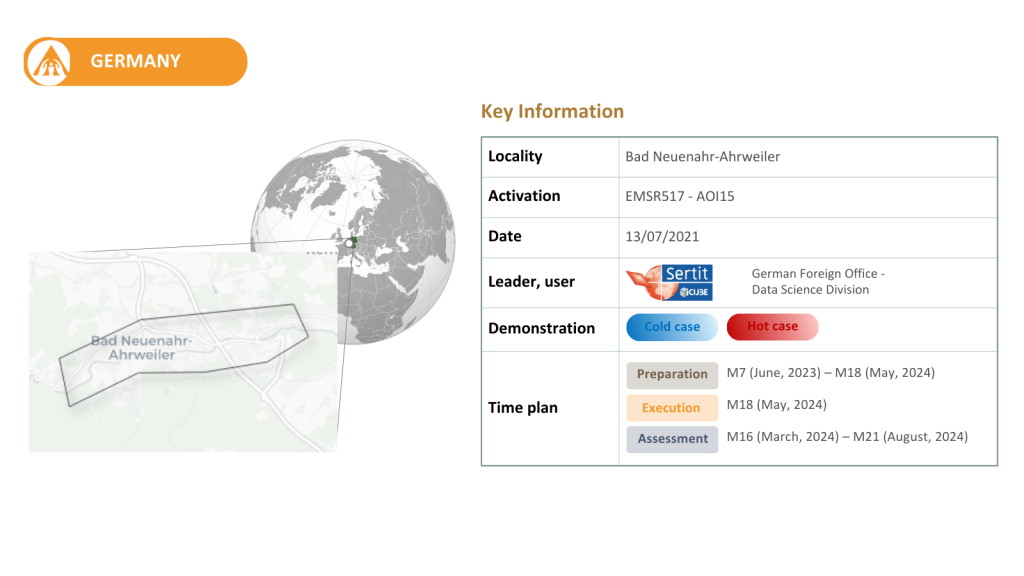Project Use Cases
News & Events
Coming soon…
Urban Floods in Germany
In July 2021, severe rainfall led to devastating floods in Germany’s Ahr Valley and tributaries of the Rhine and Saar.
This event in particular is said to be one of the most destructive in the last five decades, causing up to EUR 32 billion in damage in the affected regions. Rhineland-Palatinate, the location of this case study, has a medium hazard level for riverine floods. Bad Neuenahr-Ahrweiler and neighbouring villages were particularly affected, because of to their location downstream of steep slopes, with little to no natural mitigation factors to prevent destruction and loss of life.
In total, this event has caused more than 200 fatalities in Germany and Belgium, and the Rapid Mapping team of the Copernicus Emergency Management Service has been activated twice to monitor the consequences of the event (EMSR517 and EMSR518). Bad Neuenahr-Ahrweiler was Germany’s hardest-hit city, with an estimated 117 death toll.

Indicators to be tested:
- Historical 6 hourly return period precipitation maps
- Machine Learning data driven forecast of return period-based precipitation events in urban areas
- Urban inundation probability maps and water depth defined by return period at a spatial resolution lower than 10m
- Inferred Interferometric Synthetic Aperture Radar (InSAR) urban flood extent
- Urban flooding map based on geomorphological and InSAR appraoch for an improved damage assessment
- Social and traditional media indicators for urban flooding maps
- Hazard web sources indicator
- Economic impact of floods

